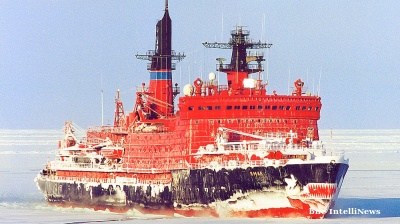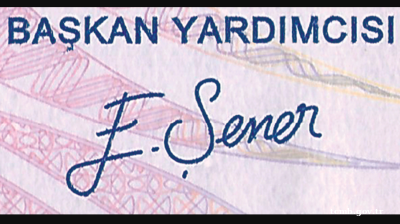Russian stocks just finished a stonkingly good year, with the leading dollar denominated Russia Trading System (RTS) index returning 45%, making it the best performing market in the world thanks to a much stronger than expected “Santa rally” that pushed the index up in the last two months of the year.
And it looks like the market could be in for another good year in 2020. 2019 was marked by the fact that the RTS finally broke out of the 900-1,300 band where it has been stuck for almost five years, since sanctions were imposed in 2014 following the annexation of the Crimea, and crossed into the 1,500s for the first time in years.
Now only a week into the New Year the RTS has broken through another barrier: the index broke through the 1,600 mark to close at 1,602 on January 8 for the first time in seven years. The last time the RTS was above 1,600 was, appropriately enough, on Valentine’s Day 2013.
Indeed, the RTS hasn’t seen a rally as strong as this since the boom years of 2005 and 2006 as the table shows. There were strong rallies since then in 2009 when the market rose a whopping 129% and 2016 when it was up 52%, but both of those were relief rallies that followed a crisis.
As I wrote in December there are several factors that have gone into this rally, including the fading fears of new harsh US sanctions as well as super high dividend payments, oil prices and rising earnings per share.

The obvious question to ask now is will the rally continue? Most analysts are bullish on the Russian stock market in 2020, but the market has already left their predictions for a 20% increase in the dust.
Sberbank set a RTS target for 2020 of 1,800 which now seems likely. BCS Global Markets recommended to clients to make use of the RTS’ range-bound prices in 2020 to make money, but their advice is also already looking very dated.
“The 1370-1490 range corresponds to a fundamental Hold zone for the Index through mid-2020. Hence, the Buy territory is below 1370 and the Sell zone is above 1490. The mid-range for the Hold zone is 1430, which we also reiterate is a fundamentally justified profit taking point in our view,” BCS GM said in a note.
Crisis or not?
Getting the timing right is key for investing into Russian stocks as the Russian stock market is extremely volatile.
The sage advice on choosing to invest is actually very simple. You only have to ask yourself: “Is this a crisis year?” As the table shows in those years the market can plummet dramatically. Following the devaluation of the ruble and default on its GKO state treasury bonds, the RTS fell 85%. Following the global financial crisis in 2008 the market dropped by 72%. And in the most recent crisis that followed the collapse of oil prices and another ruble devaluation in 2014 the market was down 42%.
However, in the non-crisis years the market usually returns at least 20%. This was true in the noughties where the Russia market enjoyed what some analysts have dubbed a super-cycle where asset prices rose every year, bar 2004, by more than 20% between 2001 and 2008.
But a second super-cycle that should have started in 2009 has failed to appear and apart from the relief rallies in 2009 and 2016 the RTS has lost money every year. First the economy began to stall in 2011 before going into actual recession in 2013 as growth fell to zero. Then on top of that the annexation of Crimea in 2014 and associated sanctions effectively killed off all investor enthusiasm.
While the RTS, an aggregate measure of the market performance, has been flat or falling, down at the corporate level things have been different. The leading corporate stocks started rallying from 2016 starting with X5 Retail Group that saw its share price double. The 2014 crisis caused a consolidation so that while the overall economy is stagnating, the leading corporates have used their deep pockets to grab market share and have seen earnings grow strongly. As the political fears fade this has caused a re-rating of many of the best names over the last four years that started with the non-political retail names and ended with the state-owned behemoths in 2019: the best performing stock in 2019 was Gazprom that saw the price of its shares rise 72% after it surprised the market by doubling its dividend pay out.
The Russia-dedicated funds were well aware of this corporate-level re-rating and the returns of East Capital, the largest Russia-dedicated retial fund, illustrate the point nicely as its Russia fund started to make money in 2016 and has riden the wave all the way up over the next four years.
One way of looking at 2019's strong result would be to argue that this corporate level re-rating process has become so widespread that it is now turning into a broad-based re-rating that is finally lifting the RTS index as well. In that case a new super cycle did in fact start in 2009 at a microeconomic level but it is only now making itself visible at a macro level.

Russia’s seasonal rallies
Another feature of Russia’s market is its seasonality. Thanks to things like investors taking profits ahead of the end of the first quarter and the government’s autumn tax collection and public spending binge, all this money impacts the equity market in a fairly predictable way.
The RTS was driven up in the last quarter of 2019 because in most years a Santa Rally that is associated with the rush to spend budget money before the holidays tends to lift the market.
bne IntelliNews has complied a table looking at the market returns over the last ten years and what the returns were each year from investing at different times of the year to try and catch the various rallies. (The year refers to the year that the initial investment was made, even if the exit comes in the next year.)

The first thing the table shows is that a “buy and hold” strategy doesn’t work with Russian stocks. The default investment is the “back to work” rally where an investor simply loads up on Russian stocks on January 1 and sells them again a year later.
While the returns in some years are spectacular – 2010 (22.5%), 2016 (51%) and 2019 (45%) were all vintage years – on average over the last decade this strategy returned only 4.5% because even within a particular year the results can be very volatile. Indeed if you count out the 2019 rally then the RTS returned precisely nothing on average to an investor between 2010 and 2018.
Trying to play the Santa rally – buying in September and selling at the end of December – returned 3.2% on average over the last decade (or 15% if you count out the loss-making years). But actually the Santa rally runs much longer into the spring when there is traditionally a sell off around Easter as investors bank profits ahead of the first quarter reporting season and new fund allocation deliberations.
This longer winter rally that runs between September and April is much more profitable and returned 6% on average in the last decade (18% if you avoid the crisis years).
And it's not too late to jump on the bandwagon this year as there is also a spring rally in the good years that runs from January to April that has made investors the best return in the last decade of 7.2% on average (18% counting out the loss making years).

Finally the worst strategy you can adopt is to try and buy after the Easter sell off and hold through the summer in the hopes of being early for the winter and spring rallies. Buying in May and selling again in April the next year after the winter and spring rallies has returned only 1% on average in the last decade.
The trouble with holding Russian stocks over the summer is that August is an accident-prone month. While traditionally it is seen as a quiet month as everyone is on holiday, several big crises have struck in an August. The 1991 coup attempt that brought the Soviet Union down and the 1998 financial meltdown both happened in an August to name two.
The lack of any domestic institutional investors to speak off makes the investment pool in the Russian equity market very shallow and so it reacts violently to any sort of shock. Indeed, half the investors into the market are foreign equity traders who are quick to take flight. Domestic banks are another big group, who are also making speculative investments. While the number of Russian retail equity investors has been growing in recent years – Moscow Exchange (MOEX) reports it has over 400,000 individual accounts – these small investors are also largely speculators. Russia has not developed big domestic pension or insurance businesses so the amount of long-term “buy and hold” capital these businesses usually bring to a market is very limited, adding to the volatility.

Features

Ambition, access and acceleration – Uzbekistan’s Startup Garage opens free academy for entrepreneurship
Aim is to train 50,000 young founders by 2030.

Ukraine’s growing energy crisis promises a cold and dark winter
Since the summer, Kyiv has changed tactics. Given the almost complete failure of Western oil sanctions to curb Russian oil exports, it has been targeting Russian oil refineries. The Kremlin has struck back, targeting Ukraine's power system.

Russia, China sign off on Northern Route shipping deal to slash global freight times
Russia and China have signed a landmark agreement to develop and commercialise the Northern Sea Route (NSR), after Beijing tested the route last month, that could slash Europe-Asia cargo transit times and challenge the primacy of the Suez Canal.

Sri Lanka’s economic escape
Sri Lanka’s recovery over the past year reads like a narrow escape rendered into a cautious, albeit unfinished success story.


